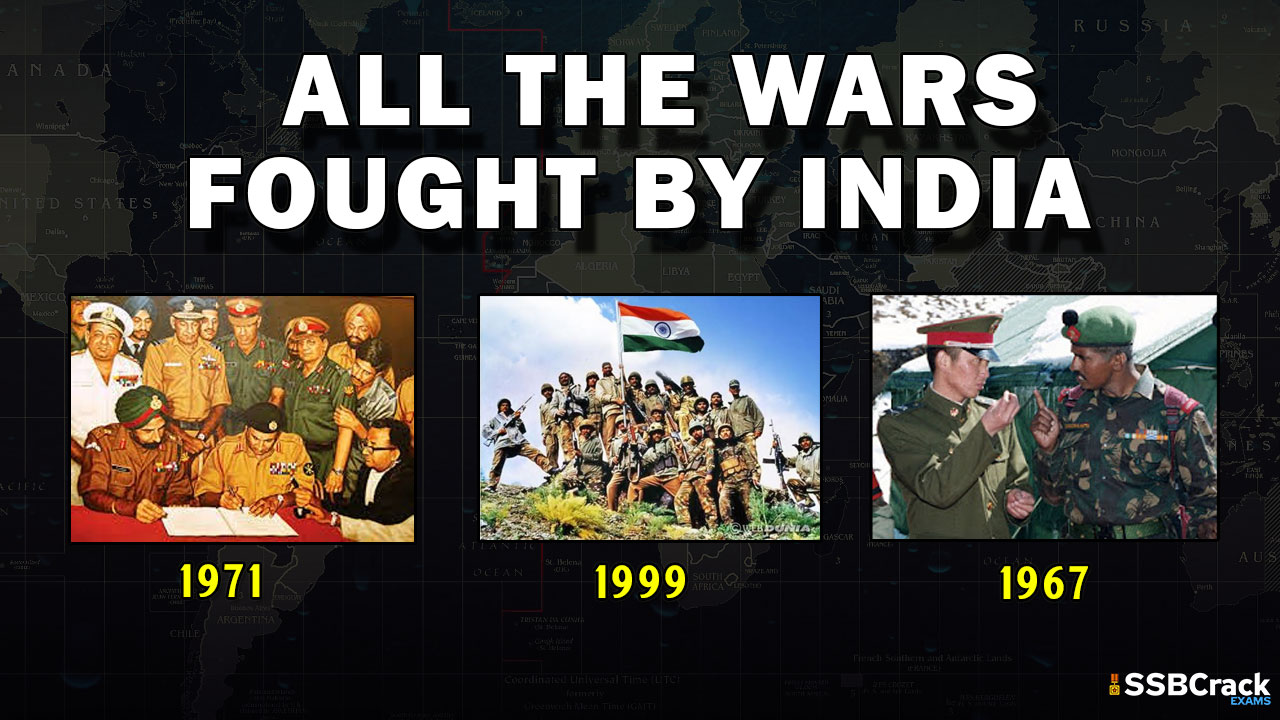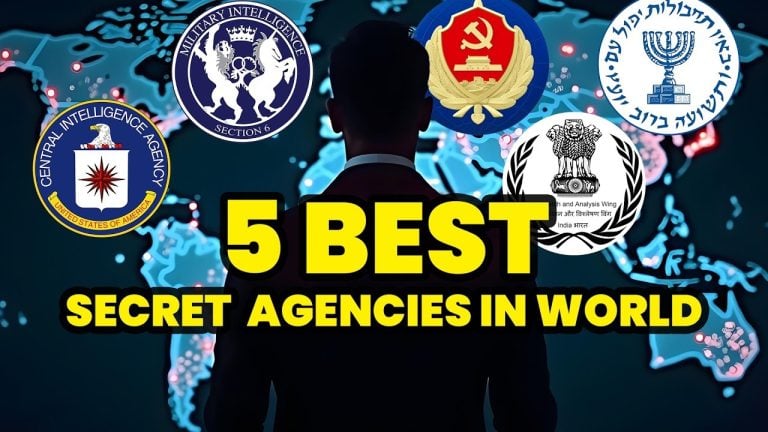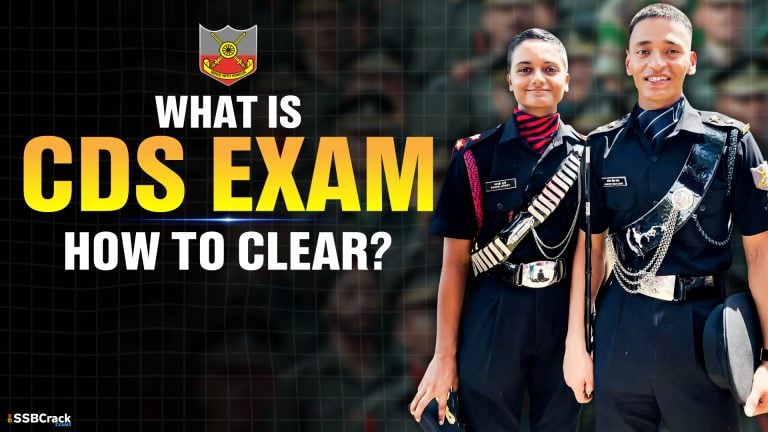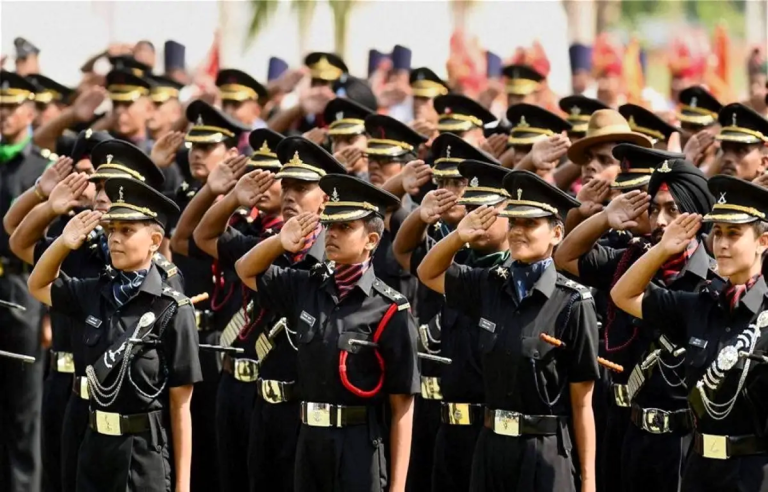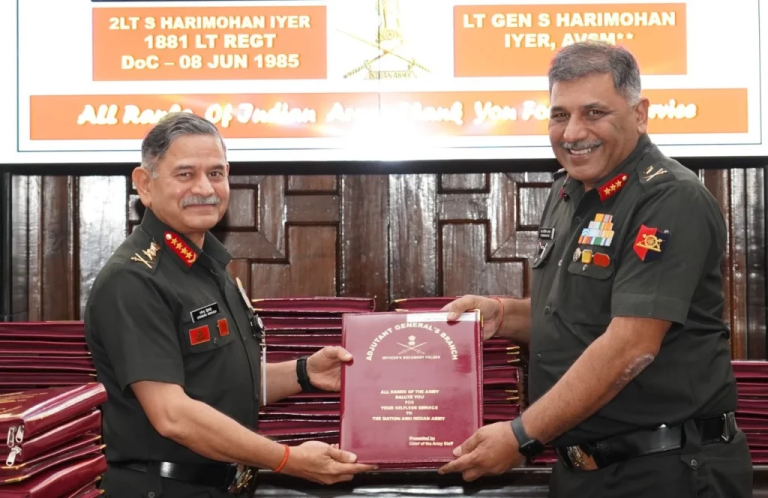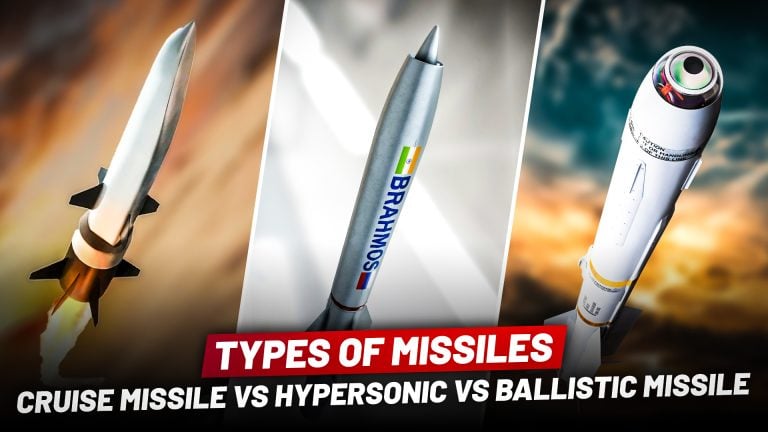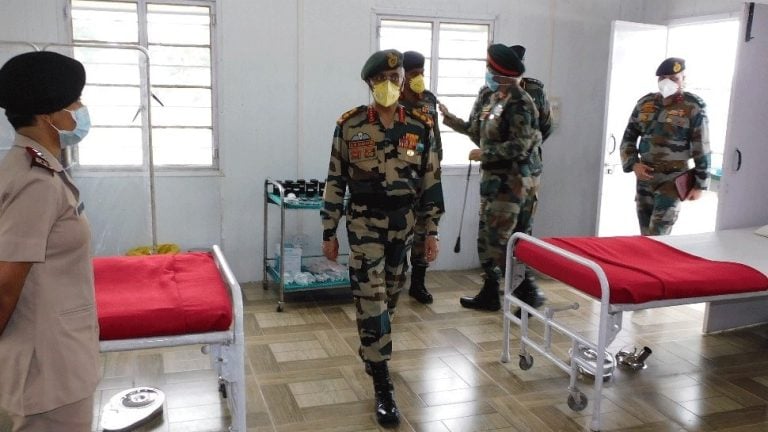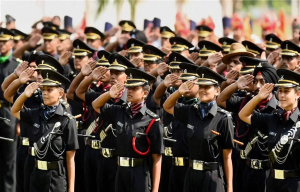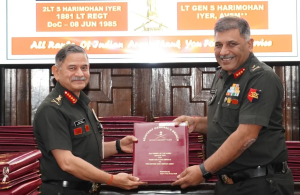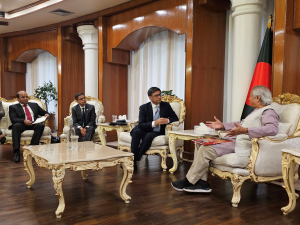List of the Wars
- The First Kashmir War of 1947 – 48
- The Sino – Indian War of 1962
- The Indo – Pak War of 1965
- The Sino – Indian War of 1967
- The Indo – Pak War of 1971
- The Kargil War of 1999
The First Indo-Pak War of 1947-48
- A result of the territorial claims of India and Pakistan over Jammu & Kashmir.
- The Indian Independence Act of 1947 – Any Princely State that was formerly a part of the British Raj has complete choice of being independent or join any of the Dominions of either India or Pakistan.
- Maharaja Hari Singh, a Hindu ruler of the Dogra dynasty, ruled the Muslim majority (3/5th) of the then Kashmir.
- Hari Singh chose to remain independent and away from both Dominions of India and Pakistan until Pakistan aggressively entered his territory in a bid to capture it. Unable to retaliate, he sought the help of India.
- Nehru made it clear that Indian troops would fight the war only if Kashmir can be declared an Indian territory.
- The Maharaja made his ultimate choice that he would join India on October 2, 1948, so that his people will be saved.
- A “Document of Accession” was signed on the day and whole Kashmir was officially transferred to India based on few conditions posed by Hari Singh.
- Respecting the views of the King, Nehru and his cabinet planned for special Articles to be kept under Indian Constitution & Kashmir be declared a State of India with Autonomous status.
The View of Pakistan – Two Nation Theory
- The two-nation theory maintained that if two ethnic groups existed in British India under British rule, namely, Hindus and Muslims, then it was logical that two nations be created.
- A multiethnic nation like Pakistan needed a principle to unify the people. Otherwise, there was a risk of the new nation splitting up.
The View of India – Ethnic Homogeneity
- Secularism is our principle. It simply means, governance has nothing to do with religion.
- Indian diplomacy maintains the respect of individual dignity coupled with patriotic fervour.
- Above all, Kashmir is OUR territory since WE HAVE the Document of Accession.
Details of the War
- Period: October 1947 to December 1948 (1 year 2 months).
- This war was terminated by a ceasefire resolution of the United Nations (UN) Security Council on January 1, 1949.
- The ceasefire established the “ceasefire line” to divide Kashmir into areas controlled by India and Pakistan, respectively.
The Second Indo-Pak War of 1965
- Period: April 8 to September 23, 1965 (5 months 15 days).
- Although the UN’s strong calls (in the form of resolutions) for a ceasefire put an end to the military clashes between India and Pakistan, no measures were taken for a lasting ceasefire.
- It was then that the Soviet Union served as an intermediary.
The Tashkent Agreement
- After further complications, an India-Pakistan summit meeting was held in Tashkent (the present capital of Uzbekistan) in the southern part of the Soviet Union from January 4, 1966.
- Prime Minister Lal Bahadur Shastri and President Ayub Khan attended from India and Pakistan, respectively, and Premier Kosygin acted as the mediator. The meeting concluded on January 10, and the Tashkent Declaration was adopted on January 11.
- In the Declaration, the leaders agreed to, among other things:
- Settle the disputes between the two countries peacefully without recourse to force in accordance with the UN Charter.
- Withdraw the military forces of the two countries no later than February 25, 1966 to the positions they held at the outbreak of war on August 5, 1965; and
- Hold discussions between the two countries for the settlement of the disputes.
Why Tashkent Declaration failed?
- One of the features of the Tashkent Declaration is that it makes no reference to the Kashmir dispute, the cause of the Indo-Pakistani War.
- Measures to realize a permanent peace were not taken under the Declaration.
- Declaration was no more than a temporary compromise is clearly proven by the fact that the third Indo-Pakistani War broke out just five years later.
A Global Diplomatic Victory of Russia due to this war
- The United States was completely occupied by the Vietnam War, and, furthermore, faced with worsening relations with Pakistan.
- Britain no longer had the capabilities to exercise influence in South Asia.
- Through the adoption of the Tashkent Declaration, the Soviet Union not only succeeded in expanding its influence in South Asia, but also simultaneously weakened the influence on Pakistan of China
The Third Indo-Pak War of 1971
- Duration: 3 December to 16 December 1971 (14 days).
- Known as the Bangladesh Liberation War.
- Prime Minister Indira Gandhi was considering the ejection of the Pakistani Army and Air Force from southern Azad Kashmir and liberating it.
- United States deployed the Seventh Fleet to the Bay of Bengal to prevent India’s attack against West Pakistan.
- International sources consider the beginning of the war to have been Operation Chenghiz Khan when Pakistan launched pre-emptive air strikes on 11 Indian airbases on 3 December 1971.
- 16 December 1971 – “Document of Surrender” was signed by Pakistan and 93000 Paki soldiers were made Prisoners of War.
- Mukti Vahini along with the armed forces of India crushed Pakistan.
- India successfully destroyed much of Karachi base along with PNS Ghazni, PNS Khyber, PNS Muhafiz, PNS Shah Jahan and 7 gunboats as Operation Python and Operation Trident were launched.
- INS Vikrant played an important role in the war along with some frigates, destroyers and submarines.
- The Indian Air Force soon took control over Dhaka as it destroyed the Air base controlled by Pakistan.
- The Pakistani military suffered further humiliation by having their 90,000 (POWs) released by India only after the negotiation and signing of the Simla Agreement on 2 July 1972.
- Pakistan lost half its navy, a quarter of its air force and a third of its army.
- Both China and USA supported Pakistan politically and materially but our old ally, USSR openly supported India and vetoed the resolution of USA to draw a cease fire between India and Pakistan in UNSC.
The Sino-Indian Wars
- Duration of Sino-Indian war 1962: October 20 to November 21, 1962.
- The dispute traces back to the drawing of the “McMahon Line.” This border was demarcated by Britain and Tibet at the Simla Convention held from 1913 to 1914 between Britain (represented by Sir Henry McMahon), China, and Tibet in Simla.
- China has not acknowledged the McMahon Line on the grounds that the Chinese Kuomintang government, which was China’s government at the time, did not sign the treaty, India claims it to be the border.
- Consequently, Arunachal Pradesh State (which is administered by India and has an area of 83,743 km2) and Aksai Chin (administered by China; 37,555 km2) in northwestern Kashmir have become disputed areas.
- The McMahon Line is said to have expanded the part of British India in this area (the current area of AP State) northward and pushed its frontier out 60 miles (some 100 km) towards Tibet. As a result of this expansion, Tawang was incorporated into British India.
- Furthermore, the adjacent Trans-Karakoram Tract (5,800 km2) in northern Kashmir is a disputed area between India and China. In other words, under the Sino-Pakistan Agreement signed on March 2, 1963, Pakistan transferred control over this area to China, with the condition that the transfer would be effective only until the settlement of the Kashmir dispute. India lodged protests with both countries on the same day, and still claims the area as Indian territory.
The Role of the Cuban Missile Crisis
- During the Cuban Missile Crisis, leaders of the U.S. and the Soviet Union engaged in a tense, 13-day political and military standoff in October 1962 over the installation of nuclear-armed Soviet missiles on Cuba, just 90 miles from U.S. shores. In a TV address on October 22, 1962, President John F. Kennedy (1917-63) notified Americans about the presence of the missiles, explained his decision to enact a naval blockade around Cuba and made it clear the U.S. was prepared to use military force if necessary to neutralize this perceived threat to national security. Following this news, many people feared the world was on the brink of nuclear war. However, disaster was avoided when the U.S. agreed to Soviet leader Nikita Khrushchev’s (1894-1971) offer to remove the Cuban missiles in exchange for the U.S. promising not to invade Cuba. Kennedy also secretly agreed to remove U.S. missiles from Turkey.
- The India-China War is closely interrelated with the “Cuban Missile Crisis” (October 14-28, 1962). At the risk of oversimplification, it could even be suggested that the India-China War would not have occurred had the Cuban Missile Crisis not taken place. It can also be said that the termination of the Cuban Missile Crisis led to the termination of the war.
A detailed view of the wars
- In the first half of the 1950s, shortly after their founding, India-China relations were referred to in India as “Indians and Chinese are brothers” (Hindi-Chini bhai-bhai). In 1954, India’s first Prime Minister, Jawaharlal Nehru, and Premier Zhou Enlai confirmed the Five Principles of Peaceful Coexistence in a bilateral agreement,8 including mutual respect for each other’s territorial integrity and sovereignty. Prime Minister Nehru felt that the agreement recognized China’s sovereignty over Tibet. In return, China would grant considerable autonomy to Tibet. India took pride in the fact that it was one of the earliest to endorse China’s return to the international community, being the first country outside of the Communist bloc to recognize China (December 1949) and having invited China to the Bandung Conference (1955).
- Nonetheless, the India-China border dispute began to surface from around this time, and the bilateral relationship started to deteriorate following the 1959 Tibet Uprising and the 14th Dalai Lama’s exile to India. When Premier Zhou Enlai visited India in 1960, he informally proposed a barter deal to India in which India would possess AP State in return for China’s possession of Aksai Chin. The barter deal fell through, however, because India claimed sovereignty over both regions. Additionally, from November 1961, India began to carry out its “forwarding policy,” a policy of establishing forward military posts across the McMahon Line on the Chinese side.
- In light of these developments, China waged the India-China War, anticipating that the world’s attention would be fixed on Cuba as a result of the worsening of U.S.-Soviet relations due to the Soviet Union’s construction of missile sites in Cuba. China registered a strong protest against India because the latter recognized the Dalai Lama’s domestic exile in India after the Tibet Uprising. Further still, with Prime Minister Nehru’s Non-Alignment Movement garnering worldwide praise, it is possible that China attempted to seize this opportunity to deal a blow against this development.
- The Soviet Union notified China about its missile site construction, partly to secure Chinese support before the United States and the Soviet Union clashed and possibly even went to war over the Cuban dispute. While there were signs that the China-Soviet relationship was deteriorating around this time, the Soviet Union attached importance to gaining China’s endorsement. Pravda, the newspaper of the Communist Party of the Soviet Union, referred to China at the time as a “brother” and a “friend,” in stark contrast to its descriptions of the United States.
- In India, on the other hand, Prime Minister Nehru and other government leaders had absolute faith in friendly India-China relations, despite their awareness that the bilateral relationship was gradually worsening following the Tibet Uprising. Not even in their wildest dreams did they think that China would invade India. Neither did India ever envision that the “forwarding policy” it was undertaking on this basis would invite Chinese retaliation. While Prime Minister Nehru acknowledged Chinese sovereignty over Tibet, he expected a Chinese policy that would grant a degree of autonomy to Tibet.
- The difference in views between India and China over their border cannot be overlooked. China regarded its border with India as an issue involving Tibet and viewed AP State and Aksai Chin through the prism of Tibet. In contrast, while India discerned that the Tibet issue was intertwined with the bilateral border conflict, all India wished for was for Tibet to serve as a buffer area between the two countries, similar to the period when the British ruled India.
India’s stand and the global scenarios
- As regards the termination of any future war in which India may be involved, two new factors need to be considered.
- The first of these is the development of India into a major power.
- Second, China or Pakistan will likely be the potential adversary in any future war involving India.
- In any war against either China or Pakistan, it is sure that India will have to constantly calculate the moves of both countries, both in the early and the last stages of the war.
The Fourth Indo-Pak War (Kargil) War of 1999
- Initial infiltrations were noticed in Kargil.
- It was a common practice for Indian and Pakistani Forces to abandon the forward posts during this time due to the extreme weather conditions. These posts would be reoccupied in Spring. Coming Spring, Pakistan Army occupied Indian posts too in a bid to capture Kashmir.
- Army launched Operation Vijay as a response to the Pakistan’s Operation Badr. Indian Air Force, as a support to the ground forces, launched Operation Safed Sagar. This war saw the first large scale use of air power in the history of the Indian Armed Forces.
- Planned by various commanders headed by the Army Chief General Ved Prakash Malik, our Army mobilized 2,00,000 Indian Troops along with several thousand from the Paramilitary Forces of India.
- Intruders were found to be well entrenched and while artillery attacks had produced results in only few areas.
- Remote areas needed the help of the Air Force.
- 30 May 1999 – Mirage 2000 aircrafts were taken into action by No. 7 Squadron of IAF. Armed with many bombs, No. 7 Squadron of IAF flew over 3 days and struck infiltrators in Muntho Dhalo, Tiger Hill, Points 4388 and 5140.
- These strikes destroyed logistics and re-supply capabilities of the enemy in Batalik sector. Tiger Hill was heavily protected and defended by IAF.
- Israelis provided 100 Laser-guided bomb kits to Indian Military – Air Force chose to make maximum use of these and retaliated the Pakistani Bunkers.
- Aircrafts operated 10000 feet AGL, well out of MANPADs (Man-portable air-defense systems) range leading to increased accuracy in bomb droppings.
- 11 July 1999 – Indian troops recapture key points in Batalik.
- 14 July 1999 – Prime Minister Atal Bihari Vajpayee declares Operation Vijay and Safed Sagar a success. Indian government sets conditions for talks with Pakistan.
- 26 July 1999 – Kargil conflict officially comes to an END. Indian Army announces complete withdrawal of Pakistani regular and irregular troops.
Conclusion
- India today perceives itself completely differently from the way it did in the Cold War period and is beginning to seek a different positioning by other countries. As a result, the start and termination of a future war will likely take a different form than during the Cold War period. In other words, it is very much possible that, as India develops into a major power, the termination of any war in which India may be involved will have aspects considerably different from those of the Cold War period.
Second, China or Pakistan will likely be the potential adversary in any future war involving India. If India were to engage in a war with China or Pakistan, either of the two countries will likely take moves that will be disadvantageous to India. Since the 1960s, China and Pakistan have rapidly deepened their relationship, which has come to be called an “all weather relationship.” In any war against either China or Pakistan, it is expected that India will have to constantly calculate the moves of both countries, both in the early and the last stages of the w

